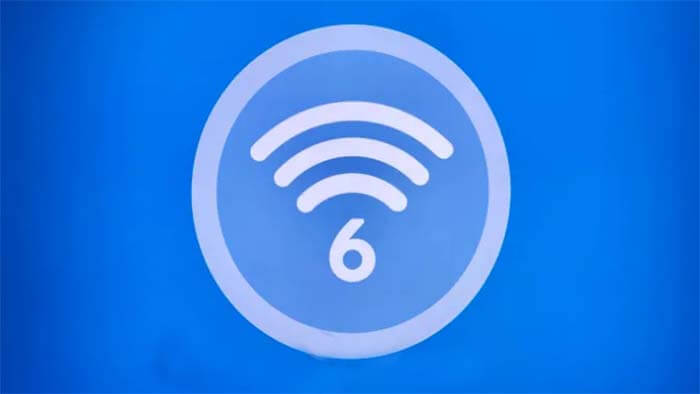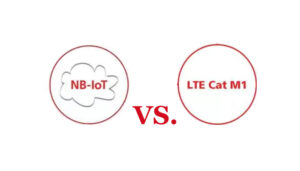What does wifi 6 mean?
Wi-Fi 6 (formerly: IEEE 802.11.ax), the sixth generation of wireless networking technology, is the name of the Wi-Fi standard. Wi-Fi 6 will allow communication with up to 8 devices at up to 9.6Gbps.
What is Wi-Fi 6 developing?
On September 16, 2019, the Wi-Fi Alliance announced the launch of the Wi-Fi 6 certification program, which is designed to bring devices using next-generation 802.11ax Wi-Fi wireless communication technology up to established standards. Wi-Fi 6 is expected to be approved by the IEEE (Institute of Electrical and Electronics Engineers) later in the fall of 2019.
In January 2022, the Wi-Fi Alliance announced the Wi-Fi 6 version 2 standard (Wi-Fi 6 Release 2).
The Wi-Fi 6 Release 2 standard (Wi-Fi 6 Release 2) improves uplink and power management for all supported bands (2.4GHz, 5GHz, and 6GHz) for routers and devices in the home and workplace, as well as smart home IoT devices.
What is the difference between Wi-Fi 6 and previous generations of Wi-Fi?
Compared to previous generations of WiFi technology, the main features of the new generation of Wi-Fi 6 are as the bellows.
What is Wi-Fi 6's feature?
Wi-Fi 6 is faster
Compared to WiFi 5, the previous generation of 802.11ac, WiFi 6 has a maximum transmission rate of 9.6Gbps, up from 3.5Gbps in the previous generation, a theoretical speed increase of nearly three times.
In terms of frequency band WiFi 5 only involves 5GHz, WiFi 6 covers 2.4/5GHz, completely covering low-speed and high-speed devices.
In terms of modulation mode, WiFi 6 supports 1024-QAM, higher than WiFi 5’s 256-QAM, with higher data capacity, which means higher data transfer speed.
Wi-Fi 6 has lower latency
WiFi 6 goes beyond just upload and download rates to dramatically improve network congestion, allowing more devices to connect to the wireless network and have a consistent, high-speed connection experience, thanks to new MU-MIMO and OFDMA technologies that support both uplink and downlink.
The WiFi 5 standard, which supports MU-MIMO (Multi-User Multi-Input Multi-Output) technology, only supports downlink, which can only be experienced when downloading content.
WiFi 6 supports both uplink and downlink MU-MIMO, which means that mobile devices and wireless routers can experience MU-MIMO when uploading and downloading data between them, further improving the bandwidth utilization of wireless networks.
WiFi 6 supports up to 8 spatial data streams, up from 4 in WiFi 5, which means it can support up to 8×8 MU-MIMO, which is one of the key reasons for the significant increase in WiFi 6 rates.
WiFi 6 uses OFDMA (Orthogonal Frequency Division Multiple Access) technology, which is an evolved version of the OFDM technology used in WiFi 5. It combines OFDM and FDMA technology, and after using OFDM to parent the channel, the transmission technology is loaded to transmit data on some sub-carriers, allowing different users to share the same channel, allowing more devices to access, with shorter response time and The response time is shorter and latency is lower.
In addition, WiFi 6 improves the transmission time per signal carrier from 3.2μs in WiFi 5 to 12.8μs through Long DFDM Symbol transmission mechanism, which reduces packet loss and retransmission rate and makes transmission more stable.
Wi-Fi 6 has more capacity
WiFi 6 introduces the BSS Coloring coloring mechanism, which labels each device that accesses the network and also adds corresponding labels to its data, transmitting data with corresponding addresses and directly transmitting in place without confusion.
Multi-user MU-MIMO technology allows multiple terminals to share channels during computer communication network time, enabling multiple phones/computers to access the Internet together at the same time.
Combined with OFDMA technology, each channel under the WiFi 6 network can be used for efficient data transmission, enhancing the network experience in multi-user scenarios, which can better meet WiFi hotspot areas, and multi-user usage, and is less prone to lagging and larger capacity.
Wi-Fi 6 is more secure
WiFi 6 (wireless router) devices that need to pass WiFi Alliance certification must use WPA 3 security protocol for higher security.
In early 2018, WiFi Alliance released a new generation of WiFi encryption protocol WPA 3, which is an upgraded version of the widely used WPA 2 protocol with further security enhancements to better stop strong attacks, brute force cracking, etc.
Wi-Fi 6 is more power efficient
WiFi 6 introduces TARget Wake Time (TWT) technology, which allows active planning of communication time between devices and wireless routers, reducing the use of wireless network antennas and signal search time, which can reduce power consumption to a certain extent and improve device endurance.

What is Wi-Fi 6’s application?
Carry 4K/8K/VR and other large broadband video
Wi-Fi 6 technology supports the coexistence of 2.4G and 5G bands, with the 5G band supporting 160MHz bandwidth and up to 9.6Gbps access rate. The 5G band is relatively less interfering and more suitable for transmitting video services, while reducing interference and packet loss through BSS coloring technology, MIMO technology, dynamic CCA and other technologies to bring better video experience.
Bearing online games and other low latency business
For VR games, the best access method is Wi-Fi wireless. The channel slicing technology of Wi-Fi6 provides exclusive channels for games to reduce latency and meet the requirements for low latency transmission quality of game business, especially cloud VR game business.
Smart Home Intelligent Interconnection
Smart home smart interconnection is an important factor for smart home, smart security and other business scenarios.
Current home interconnection technologies have different limitations, and Wi-Fi6 technology will bring technical unification opportunities for smart home interconnection, integrating high density, large number of accesses, and low power optimization, while being compatible with various mobile terminals commonly used by users and providing good interoperability.
Industry Applications
Wi-Fi6, as a new generation of high-speed, multi-user, high-efficiency Wi-Fi technology, has a wide range of application prospects in industry sectors, such as industrial parks, office buildings, shopping malls, hospitals, airports, and factories.
Besides the What is Wi-Fi 6 article, you may also be interested in the below articles.
PCB Antenna VS. External Antenna
Ceramic Antenna VS. PCB Antenna, A Comparison Guide
Wifi vs. 5G, is 5G better than Wifi?
Mobile Networks’ Evolution From 1G To 5G




